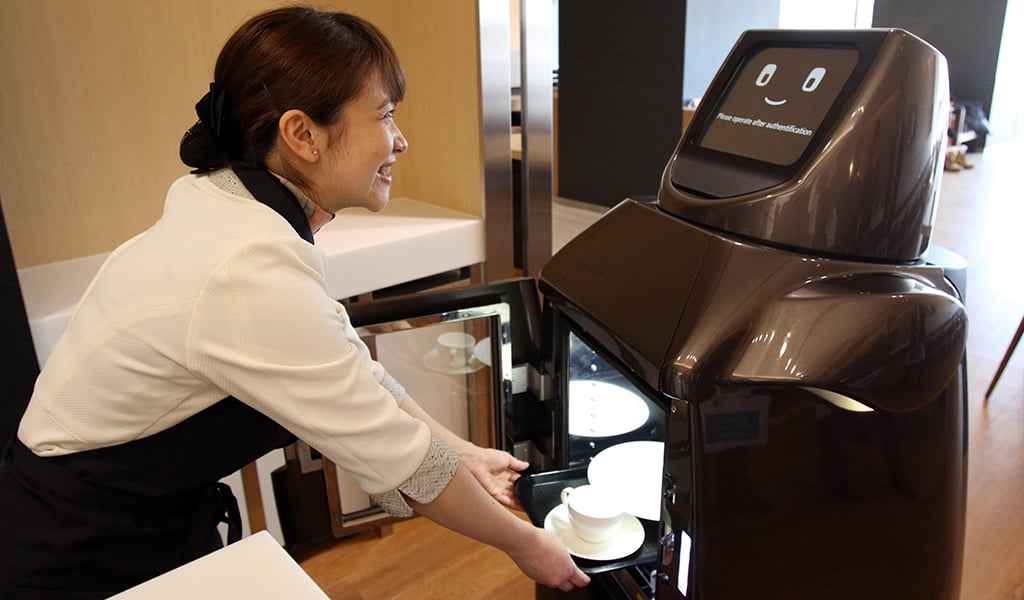As Japan’s population ages and the birth rate is too low to sustain growth, the country is no stranger to coping with a limited number of working age people.
As shown in our Chart of the Week, which we also feature in the latest issue of Finance and Development, Japan is still a leader in robot production and industrial use. The country exported some $1.6 billion worth of industrial robots in 2016—more than the next five biggest exporters (Germany, France, Italy, United States, South Korea) combined. Japan is also one of the most robot-integrated economies in the world in terms of “robot density”—measured as the number of robots relative to humans in manufacturing and industry. Japan led the world in this measure until 2009, when Korea’s use of industrial robots surged and Japan’s industrial production increasingly moved abroad.
Automation and robotics, either to replace or enhance people in the workforce, are familiar concepts in Japanese society. Japanese companies have traditionally been at the forefront in robotic technology. Firms such as FANUC, Kawasaki Heavy Industries, Sony, and the Yaskawa Electric Corporation led the way in robotic development during Japan’s economic rise. Automation and the integration of robotic technology into industrial production have also been an integral part of Japan’s postwar economic success. Kawasaki Robotics started commercial production of industrial robots over 40 years ago. About 700,000 industrial robots were used worldwide in 1995, 500,000 of them in Japan.
Japan is also one of the most robot-integrated economies in the world.
For policymakers, the first hurdle is to accept that change is coming. The steam engine was likely just as disconcerting, but it came nonetheless—putting an end to some jobs but generating many new ones as well. Artificial intelligence, robotics, and automation have the potential to make just as big a change, and the second hurdle may be to find ways to help the public prepare for and leverage this transformation to make lives better and incomes higher. Strong and effective social safety nets will be crucial, since disruption of some traditional labor and social contracts seems inevitable. But education and skills development will also be necessary to enable more people to take advantage of jobs in a high-tech world. And in Japan’s case, this also means a stronger effort to bring greater equality into the labor force—between men and women, between regular and nonregular employees, and even across regions—so that the benefits and risks of automation can be more equally shared.
Domo arigato, Mr. Roboto, indeed.





